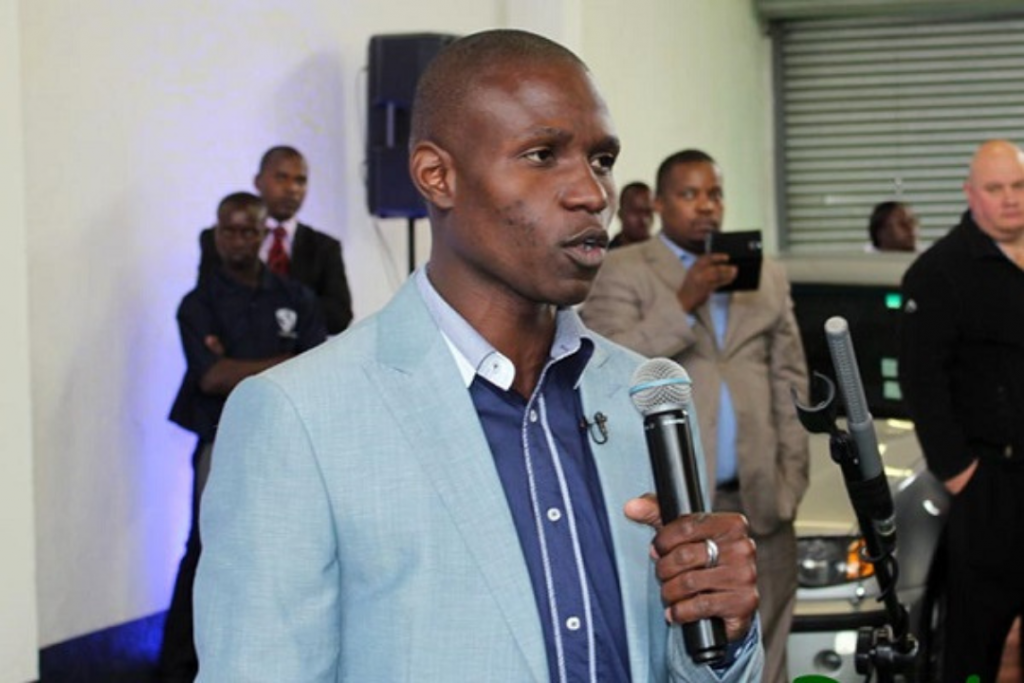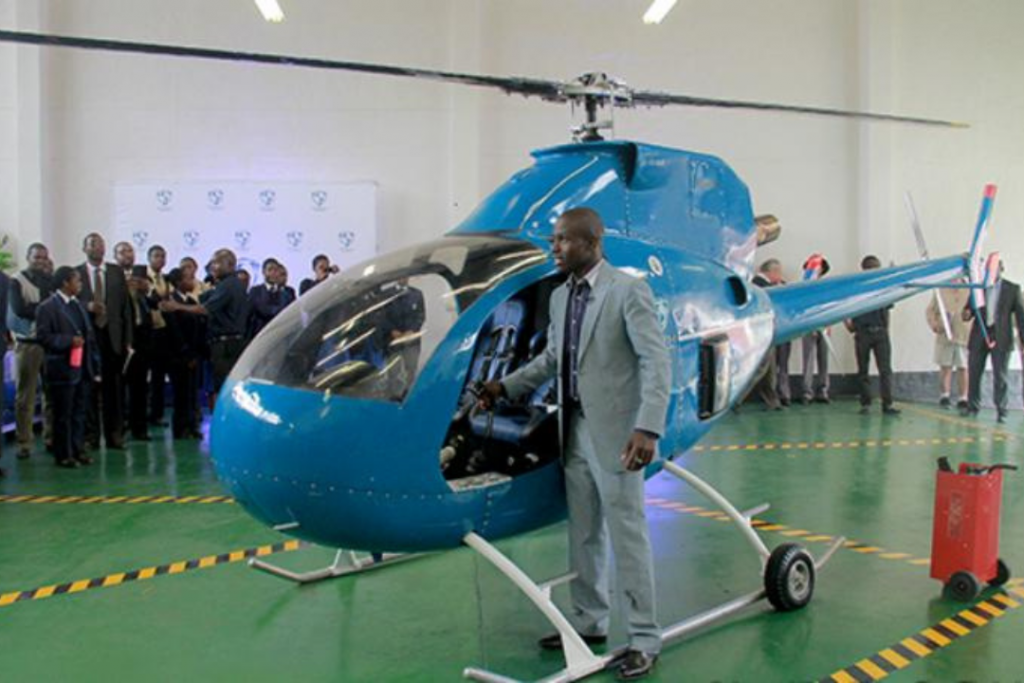Physical Address
60 Ekwema Cres, Layout 460281, Imo
Physical Address
60 Ekwema Cres, Layout 460281, Imo

The landscape of innovation has never been so vibrant, particularly in Africa, where countless game-changing inventions are being churned out.
The pantheon of African innovators is fast-growing and pushing boundaries in various fields, including technology and engineering, mostly electricity.
One such maverick is Maxwell Sangulani Chikumbutso from Zimbabwe. Pioneering a revolutionary phase in the field of technology and power generation, Zimbabwean African innovator Maxwell Sangulani Chikumbutso challenges traditional electricity concepts.
Steadfastly committed to revolutionizing the way we perceive and use electricity, the African innovator Chikumbutso has astounded the world with his cutting-edge innovations.
Garnering global attention for inventing a self-powered TV and a hybrid engine-powered helicopter, this Zimbabwean technophile is leading the charge toward sustainable solutions and forging a unique path for African innovation.
This article explores the captivating narrative of an African innovator, unveiling the genius behind the self-powered TV, bringing entertainment to the farthest corners, and the eco-friendly helicopter, soaring above conventional limits.
Chikumbutso’s creations stand as a testament to the potent fusion of innovation and commitment, casting a radiant light on Zimbabwe’s technological future.
Stay with us as we dive deeper into the life, mind, and ground-breaking inventions of this remarkable African innovator in the field of electrical engineering.
Read Also: Google’s Product Impact on Digital Technology in Nigeria, Generates $1.8 Billion in 2025

Maxwell Chikumbutso is a renowned African inventor from Zimbabwe. He studied coding, design, and hardware configuration despite socioeconomic constraints and limited access to education.
Through perseverance and curiosity, he built creative projects, including a model of a radio station transmitter.
Through the financial support of a sponsor, he founded Saith Technologies in 2009. Chikumbutso’s creative inventions, including a green power generator and electric car, have gained international recognition.
His is proof of strength of determination, discipline, and self-study, that one’s circumstances of birth are not fate. Chikumbutso’s is proof of imagination and will power.
Also Read: Exclusive: A Closer Look into the Top 10 Biggest Fintech Companies in Africa 2025

The African innovator Maxwell Sangulani Chikumbutso’s inspiration for creating a self-powered TV stemmed from a deep-rooted commitment to addressing the energy challenges prevalent in his home country, Zimbabwe, and beyond.
Witnessing the persistent issues of unreliable electricity access and recognizing the impact it had on daily lives, Chikumbutso sought a solution that would be sustainable, cost-effective, and environmentally friendly.
Chikumbutso’s ingenious creation of a self-powered TV has reshaped the landscape of electricity consumption. Breaking away from traditional power sources, this innovation harnesses alternative energy, providing a sustainable and eco-friendly solution for powering televisions.
The principle behind the self-powered television is radio frequency harvesting. This entails harnessing electromagnetic energy from radio and TV waves present in the atmosphere and converting it into usable electrical energy.
In detail, the African innovator Chikumbutso’s television works in the following way:
The television is fitted with an energy-harvesting device that can pick up free and naturally occurring radio waves in the environment. The technology relies on an extended antenna and specialized circuits to collect and accumulate energy from a broad range of electromagnetic wave frequencies.
Once harvested, the electromagnetic energy is then converted into electrical energy through an efficient conversion process. This step is carried out by an energy conversion circuit that was uniquely designed and created by Chikumbutso.
The converted electrical energy is stored in a high-capacity supercapacitor, which can store this power for a significant amount of time, thus powering the TV even in periods when no ambient radio waves are available.
The energy stored in the supercapacitor is then supplied to the different components of the television. An inbuilt power management system ensures that energy is distributed efficiently and consistently to the parts that need it.
The fascinating aspect of this African innovator’s self-powered television is not only its reliance on green power but also its potential to transform societies.
For instance, people living in rural areas with limited or no access to power could use such devices to stay connected with the rest of the world. Moreover, the sustainability of the technology makes it environmentally friendly and cost-effective in the long run.
Check Out the: Top 10 AI Innovations That will Change Our Lives in 2024-2025

Sangulani Chikumbutso invented the hybrid helicopter, the Saith Hex Copter, which has two seats. It operates on six different fuel types and has a hybrid propulsion engine.
The African innovator needed to import various spare components, graphite, and digital elements to finish his innovation. However, the majority of the materials utilized, including aluminum and steel, are sourced from Zimbabwe.
What is the hybrid helicopter’s main asset? The employment of fly-by-wire technology (electric flight controls) to replace manual control with electronics. Because of this technology, the Saith Hex Copter is lighter at high altitudes.
What sets this particular aircraft apart is that it runs on radio frequency waves instead of relying on fuel, making it an environmentally friendly and more sustainable option. Here’s a simplified explanation of how this innovative helicopter operates:
The African innovator’s helicopter is powered by an innovative hybrid engine known as a micro-sonic energy device. This engine functions using electromagnetic waves.
Unlike other helicopters that use fuel as their primary energy source, this helicopter uses radio frequencies. Radio waves are electromagnetic waves, and Chikumbutso designed a system that could efficiently harness and convert this form of energy into mechanical energy.
The micro-sonic energy device draws from an abundant source of natural, earth-generated electromagnetic waves. Which he often refers to as background static. Using a uniquely designed antenna and coil, the device harnesses and amplifies these electromagnetic waves.
The next step is to convert the harnessed energy into a usable form. The system utilizes specially designed capacitors, which have a high voltage threshold. They effectively store the electromagnetic energy before releasing it as mechanical power.
To power the helicopter’s propulsion system, he uses the converted mechanical energy. Instead of conventional turbine engines that burn fuel, Chikumbutso’s helicopter uses electric motors for propulsion.
Since the entire process does not involve combustion, it results in zero carbon emissions. This is why people consider the Chikumbutso helicopter a more sustainable and eco-friendly choice.
In essence, Maxwell Chikumbutso has harnessed the power of naturally occurring electromagnetic waves to power his hybrid helicopter.
The micro-sonic energy device captures these waves and converts them into mechanical energy, which they use to drive the aircraft, all while ensuring zero carbon emissions.
Also, take some time to read: Big Story: AltSchool Africa Launches its Second-Biggest Market in Kenya
Maxwell Chikumbutso’s most prominent inventions, the self-powered TV and hybrid engine-powered helicopter, are groundbreaking for several reasons, and they have the potential to impact society positively, particularly in Africa.
The self-powered TV is revolutionary, as it can operate entirely on radio frequencies and does not require electricity, an external power supply, or solar energy.
This invention can potentially transform societies, particularly those in remote or rural Africa, where access to electricity can be unreliable or nonexistent.
Not only does it solve the energy access issue, but it also allows information dissemination to these areas.
Through the use of a self-powered TV, people in isolated communities would have better access to local and international news, entertainment, and educational content, which can ultimately enhance their knowledge and understanding of the world.
This type of technology can also enable distance learning, which is especially vital in the current era of the global pandemic, where remote learning has become a necessity.
As for the hybrid engine-powered helicopter, it too holds promise for significant impact, particularly in Africa’s transport sector.
It uses both fuel and electric power, increasing fuel efficiency and reducing environmental pollution. Given the state of Africa’s transport infrastructure, such an innovation could help revolutionize the transportation system, allowing more accessible, reliable, and eco-friendly travel.
Overall, the potential societal impact of African Innovator’s inventions cannot be understated. The self-powered TV and hybrid engine-powered Helicopter offer remarkable solutions to critical challenges in Africa, particularly in terms of energy access and transportation.
As such, they promise to improve lives and stimulate economic development significantly, making Chikumbutso a beacon of hope for Africa’s sustainable future.
Don’t miss out on reading- Exclusive: Olu Akanmu’s Exit from Opay and the Whole Truth
Maxwell Sangulani Chikumbutso, a Zimbabwean inventor, faced numerous challenges as he developed the self-powered TV and Hybrid Engine Powered Helicopter.
Lacking formal education and financial backing, Chikumbutso’s work is often dismissed and underfunded. He struggled to gain recognition and faced constant skepticism.
Despite these adversities, Chikumbutso proved his naysayers wrong. He successfully created the world’s first radio frequency-powered television and a hybrid engine-powered helicopter, challenging conventional wisdom and making a significant technological leap.
The creations, both innovative and cost-effective, propelled him into the limelight, capturing the world’s attention. His journey underlines the power of persistence and audacity in the face of adversity, painting an inspirational tale of a self-taught inventor revolutionizing the tech industry thereby opening a new chapter in African innovation.
Chikumbutso’s work caught the eye of Fundo Soberano de Angola, an Angolan Sovereign Wealth Fund.
They have collaborated with Chikumbutso to manufacture and develop electric vehicles and GPMs, a move that’s bolstering Africa’s efforts to tap into renewable energy sources.
Various academic and innovation forums globally recognize his innovations. Chikumbutso was the key speaker at the African Union (AU)’s Innovating Education in Africa Expo, where he showcased the Greener Power Machine.
This global recognition has significantly raised the profile of Zimbabwe and Africa on the map of innovation and technological advancement.
Despite the challenges he faced, Maxwell Sangulani Chikumbutso’s exceptionally innovative mind and his pursuit to solve the world’s problems using technology have gained him recognition and paved the way for collaborations around the globe. He is indeed a beacon of innovation and a source of inspiration for many aspiring inventors.
Chikumbutso’s work not only has put Zimbabwe on the global scientific and technological map, but it has also offered hope and proof to many young people across Africa and the world that irrespective of your background or education, innovation is possible.
Also Read – Just In: Nigerian Wealthtech Startup Cova Shuts Down
African innovators have demonstrated exceptional resilience and ingenuity in the face of challenges, promising a bright future. Central to this is addressing Africa’s electricity issue; about 600 million Africans lack access to power.
In response, several local start-ups, particularly in Zimbabwe, have sprung up to exploit renewable energy sources, reduce power shortages, and fuel economic growth.
Given the growing focus on clean energy globally, these start-ups will flourish. This electric revolution paves the way for digital innovations to sprout across the continent, heralding the advent of African-based solutions to African challenges.
Harnessing the potential of African innovators will be essential for the continent’s future development. Their ventures not only uplift the standard of living but are likely to create employment opportunities, a true win-win.
Maxwell Sangulani Chikumbutso is a true testament to African innovation. His remarkable journey from humble beginnings in Zimbabwe to a leading innovator showcases immense dedication.
By inventing a self-powered TV and hybrid engine-powered helicopter, Chikumbutso has ingeniously challenged the status quo.
These groundbreaking inventions don’t just mitigate the common problem of electricity shortage in Africa but have the potential to revolutionize power solutions globally.
Chikumbutso’s resourcefulness inspires future African innovators to rise above adversities and shape a better future for their continent.
Undoubtedly, Chikumbutso’s legacy cements him as a trailblazer in scientific advancements, and his innovations will continue to shine as beacons of African technological progression.
Yes, the technology used in his inventions is patent which is by the African Regional Intellectual Property Organization (ARIPO).
Yes, the United Nations recognize and appreciate his work and have invited him on several occasions to demonstrate his inventions.
His inventions are not yet in mass production, so their use is currently not widespread.